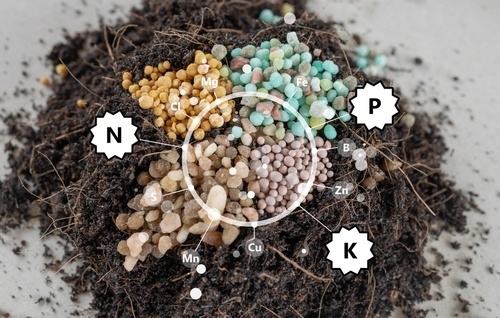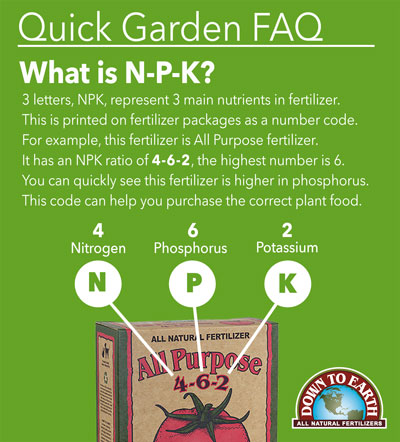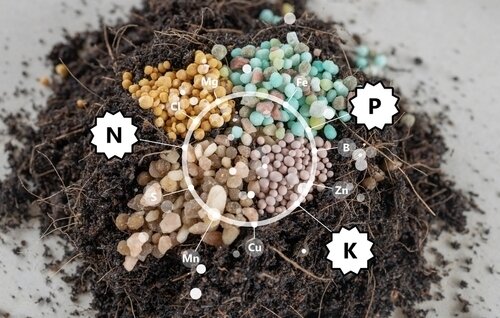Deciphering the Mysterious NPK Code
For gardeners and agricultural professionals, understanding the cryptic code on fertilizer labels is crucial for making informed decisions about plant nutrition. The NPK ratio, a series of three numbers that represent the percentage of nitrogen, phosphorus, and potassium in a fertilizer, can seem like a mysterious language to those unfamiliar with its meaning. However, grasping the concept of NPK is essential for optimizing plant growth, preventing nutrient deficiencies, and minimizing environmental impact. So, what does NPK stand for, and why is it so important in gardening and agriculture?
In the world of plant nutrition, NPK is the foundation upon which all fertilizers are built. By understanding the role of each element in the NPK ratio, gardeners and farmers can tailor their fertilization strategies to meet the specific needs of their plants. Nitrogen, phosphorus, and potassium are the three primary macronutrients that plants require to grow and thrive. Nitrogen promotes leaf growth and development, phosphorus supports root growth and flower production, and potassium helps with overall plant health and resistance to disease.
When selecting a fertilizer, it’s essential to consider the NPK ratio and how it will impact plant growth. A balanced fertilizer with a suitable NPK ratio can help promote healthy growth, while an unbalanced fertilizer can lead to nutrient deficiencies and reduced yields. By deciphering the NPK code, gardeners and farmers can unlock the secrets of fertilizer labels and make informed decisions about plant nutrition.
What is NPK and Why Does it Matter?
NPK stands for Nitrogen, Phosphorus, and Potassium, the three primary macronutrients that plants require to grow and thrive. Understanding what NPK stands for is crucial for gardeners and farmers, as it helps them make informed decisions about plant nutrition. Nitrogen (N) is responsible for leaf growth and development, phosphorus (P) supports root growth and flower production, and potassium (K) helps with overall plant health and resistance to disease.
Nitrogen is a critical component of amino acids, which are the building blocks of proteins. Plants use nitrogen to produce chlorophyll, which is essential for photosynthesis. Phosphorus, on the other hand, plays a key role in root development, flower and fruit production, and overall plant energy. Potassium helps plants resist disease and pests, and is also involved in the regulation of water balance and nutrient uptake.
When considering what NPK stands for, it’s essential to understand the role of each element in plant growth and development. A balanced NPK ratio is critical for optimal plant growth, as an imbalance can lead to nutrient deficiencies and reduced yields. For example, a lack of nitrogen can result in stunted growth and yellowing leaves, while an excess of phosphorus can lead to an overabundance of foliage and reduced fruiting.
By understanding the role of NPK in plant nutrition, gardeners and farmers can make informed decisions about fertilizer selection and application. This knowledge can help them optimize plant growth, prevent nutrient deficiencies, and reduce the environmental impact of fertilizers. Whether you’re a seasoned gardener or just starting out, understanding what NPK stands for is a critical step in mastering the art of plant nutrition.
How to Choose the Right NPK Ratio for Your Plants
Choosing the right NPK ratio for your plants can be a daunting task, especially for beginners. However, by understanding the specific needs of your plants, you can select a fertilizer with the optimal NPK ratio to promote healthy growth and development. For example, if you’re growing leafy green vegetables like lettuce or spinach, a fertilizer with a higher nitrogen content (such as 20-5-5) would be beneficial. On the other hand, if you’re growing fruiting plants like tomatoes or peppers, a fertilizer with a higher phosphorus content (such as 15-30-15) would be more suitable.
For flowers, a balanced fertilizer with a ratio of 20-20-20 is often recommended. This provides an equal amount of nitrogen, phosphorus, and potassium to promote healthy growth and blooming. For lawns, a fertilizer with a higher nitrogen content (such as 30-5-5) can help promote a lush, green appearance.
It’s also important to consider the specific growing conditions of your plants. For example, if your plants are growing in poor soil, a fertilizer with a higher phosphorus content can help promote root development and improve soil health. If your plants are growing in a container, a fertilizer with a higher potassium content can help promote overall plant health and resistance to disease.
By considering the specific needs of your plants and the growing conditions, you can choose a fertilizer with the optimal NPK ratio to promote healthy growth and development. Remember to always read the label carefully and follow the instructions for application rates to avoid over- or under-fertilization.
The Importance of Balanced Fertilization
Balanced fertilization is crucial for healthy plant growth and development. A balanced NPK ratio ensures that plants receive the necessary nutrients to thrive, while minimizing the risk of over- or under-fertilization. Over-fertilization can lead to a range of problems, including nutrient burn, soil pollution, and water contamination. On the other hand, under-fertilization can result in stunted growth, reduced yields, and increased susceptibility to disease and pests.
A balanced NPK ratio also promotes soil health, which is essential for sustainable gardening and agriculture. When plants receive the necessary nutrients, they are better able to absorb and utilize them, reducing the risk of nutrient deficiencies and imbalances. Additionally, a balanced NPK ratio can help to promote beneficial microbial activity in the soil, which is essential for nutrient cycling and plant growth.
So, what does a balanced NPK ratio look like? A general-purpose fertilizer with a ratio of 10-10-10 (nitrogen-phosphorus-potassium) is often considered a balanced fertilizer. However, the ideal NPK ratio will depend on the specific needs of your plants, as well as the soil type and growing conditions. By understanding the importance of balanced fertilization and selecting a fertilizer with the optimal NPK ratio, you can promote healthy plant growth and development, while minimizing the risk of over- or under-fertilization.
It’s also important to note that a balanced NPK ratio is not just about the numbers, but also about the type of fertilizer used. Organic fertilizers, such as compost or manure, can provide a more balanced and sustainable source of nutrients, compared to synthetic fertilizers. By choosing a balanced and sustainable fertilizer, you can promote healthy plant growth and development, while also protecting the environment.
Common NPK Ratios for Popular Fertilizers
When it comes to choosing a fertilizer, it can be overwhelming to navigate the various NPK ratios available. However, by understanding the common NPK ratios for popular fertilizers, you can make informed purchasing decisions and ensure that your plants receive the necessary nutrients to thrive.
For example, Miracle-Gro’s All Purpose Plant Food has an NPK ratio of 24-8-16, making it a balanced fertilizer suitable for a wide range of plants. Scotts’ Turf Builder Lawn Fertilizer has an NPK ratio of 32-4-4, making it a high-nitrogen fertilizer ideal for promoting lush, green grass.
Other popular fertilizers and their NPK ratios include:
- Espoma Organic Bloom Plant Food: 5-3-4
- Schultz All Purpose Plant Food: 20-20-20
- E.B. Stone Organics Bloom 5-3-4
By understanding the NPK ratio of a fertilizer, you can determine whether it is suitable for your specific plants and growing conditions. Remember to always read the label carefully and follow the instructions for application rates to ensure optimal results.
It’s also important to note that some fertilizers may have additional nutrients or micronutrients that can benefit plant growth. For example, some fertilizers may contain micronutrients like iron, zinc, or boron, which can help to promote healthy plant growth and development.
How to Read Fertilizer Labels Like a Pro
Reading fertilizer labels can be a daunting task, especially for beginners. However, by understanding the key components of a fertilizer label, you can make informed decisions about the best fertilizer for your plants. Here’s a step-by-step guide on how to read fertilizer labels like a pro:
Step 1: Check the NPK Ratio
The NPK ratio is the most important information on a fertilizer label. It represents the percentage of nitrogen (N), phosphorus (P), and potassium (K) in the fertilizer. For example, a fertilizer with an NPK ratio of 20-5-10 contains 20% nitrogen, 5% phosphorus, and 10% potassium.
Step 2: Look for Additional Nutrients
Some fertilizers may contain additional nutrients such as micronutrients (e.g., iron, zinc, boron) or secondary macronutrients (e.g., calcium, magnesium, sulfur). These nutrients can provide additional benefits to plant growth and development.
Step 3: Check the Application Rates
The application rates section of the label provides instructions on how to apply the fertilizer. This includes the recommended amount of fertilizer to apply per square foot or acre, as well as the frequency of application.
Step 4: Consider the Formulation
Fertilizers can come in different formulations, such as granular, liquid, or slow-release. Each formulation has its own advantages and disadvantages, and the right choice will depend on your specific needs and preferences.
By following these steps, you can read fertilizer labels like a pro and make informed decisions about the best fertilizer for your plants. Remember to always follow the instructions on the label and take necessary precautions to avoid over-fertilization.
NPK and Soil Health: What You Need to Know
Soil health is a critical component of gardening and agriculture, and NPK plays a significant role in maintaining healthy soil. The NPK ratio of a fertilizer can impact soil pH, microbial activity, and nutrient cycling, all of which are essential for optimal plant growth.
Soil pH is a measure of the acidity or alkalinity of the soil, and it can be affected by the NPK ratio of a fertilizer. For example, a fertilizer with a high nitrogen content can lower the soil pH, making it more acidic. On the other hand, a fertilizer with a high potassium content can raise the soil pH, making it more alkaline.
Microbial activity is also impacted by the NPK ratio of a fertilizer. Microorganisms in the soil, such as bacteria and fungi, play a crucial role in breaking down organic matter and releasing nutrients for plant growth. A balanced NPK ratio can promote healthy microbial activity, while an imbalanced ratio can disrupt the soil’s ecosystem.
Nutrient cycling is another important aspect of soil health, and NPK plays a key role in this process. Nutrient cycling refers to the movement of nutrients through the soil and into plants. A balanced NPK ratio can promote efficient nutrient cycling, while an imbalanced ratio can lead to nutrient deficiencies or excesses.
By understanding the relationship between NPK and soil health, gardeners and farmers can make informed decisions about fertilizer selection and application. This knowledge can help to promote healthy soil, optimal plant growth, and sustainable gardening and agricultural practices.
Conclusion: Mastering the Art of NPK
Understanding the concept of NPK and its importance in gardening and agriculture is crucial for making informed decisions about fertilizer selection and application. By grasping the basics of NPK, gardeners and farmers can optimize plant growth, prevent nutrient deficiencies, and promote healthy soil.
In this article, we’ve covered the essential topics related to NPK, including what NPK stands for, how to choose the right NPK ratio for your plants, and the importance of balanced fertilization. We’ve also discussed common NPK ratios for popular fertilizers, how to read fertilizer labels like a pro, and the relationship between NPK and soil health.
By applying the knowledge and concepts presented in this article, readers can take their gardening and agricultural practices to the next level. Remember, mastering the art of NPK is a continuous process that requires ongoing learning and experimentation. Stay curious, keep exploring, and happy gardening!








